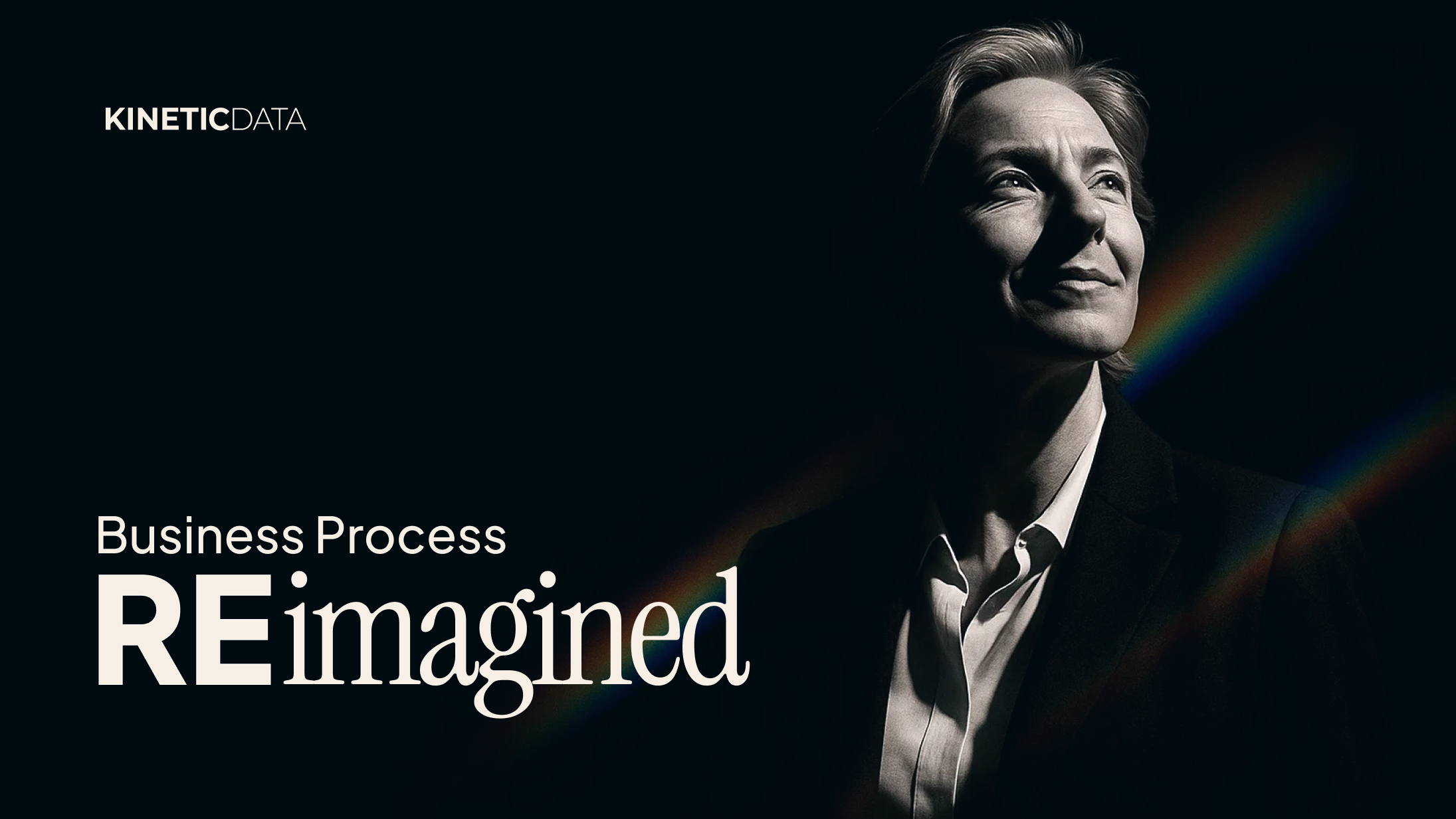Comprehensive Guide to Enterprise IT Service Automation
IT support automation uses software workflows, rule engines, AI/ML, and integrations to automate...

As business processes are transformed from manual to fully automated through the six-step journey mapped out in the Kinetic Automation Maturity Model (KAMM), time and costs are reduced at each stage.
But the biggest single cut in costs comes in the transition from Stage 4 to Stage 5, as the typical internal fulfillment process cost drops from $5 to $1. The typical fulfillment time is also slashed, from “hours to days” to “minutes to hours.”
That’s huge. But is it realistic? Well, not every Stage 4 business process can be feasibly migrated to Stage 5. But for those processes that can be moved, yes: the replacement of human effort with machine execution can produce dramatic reductions in the time and cost of fulfillment.
Here’s a quick look back at Stage 4, an introduction to Stage 5, an outline of the benefits and a brief example.
The flow of Stage 4 processes is from request to approval to (human) fulfillment to (machine) execution:

An example includes adding a new hire to the executive group in Active Directory. This will enable the person to get a set of security privileges. Once approved, the request would be routed to a human fulfiller who would then select the relevant Active Directory attributes and save the record.
As soon as the fulfiller hits “Save,” the workflow engine would call Active Directory, make the modification to add the newly hired individual to the executive security group, and provide notification. That’s what Stage 4 is about: in the workflow of fulfilling a request, a human has to add some information at some point before it can move forward. That’s the middle step.
Stage 4 gets rid of the “swivel chair” at Stage 3 where the fulfiller must copy-paste or re-enter data between different systems. This eliminates the risk of duplicate data entry errors and keeping the fulfiller in the flow of using a single system, with fulfillment optimized for the task at hand.
Beyond time and cost savings, a key benefit of migrating processes from Stage 3 to Stage 4 is savings on software license fees. For example, suppose you have hundreds of requests coming in each month and 10 people who normally deal with those.
If you can move 90% of those to Stage 4 where the processing is being done through an API, then only 10% will require your staff to deal with these directly in the target system.
You now need only one or two licenses instead of 10, significantly reducing your software license costs.
Though many of the processes that make it to Stage 4 will be further refined and automated into Stage 5 workflows, there are a number of reasons why an organization may choose to keep certain processes at Stage 4.
Complexity: When a process has a large number of variables or variations — each of which constitute a low-volume version of a common high-level process — it may be too complex to codify. It’s not worth the effort to automate every variation of the process because the volume or frequency doesn’t justify it.
Multiple systems: It can be that within the human fulfillment step of a Stage 4 process, the fulfiller needs to interact with multiple back-end systems, with only part of the process “automatable” through APIs. This is particularly the case when one or more of those systems is a legacy platform that doesn’t allow for easy integration.
Multiple fulfillers: Similarly, if a process requires the efforts of multiple human fulfillers in a daisy chain, it may be too complex to automate.
High-touch functions & examples: A process may include human-centered interactions that don’t lend themselves to easy data gathering, such as requiring an interview. This is common, for example, across HR processes such as:
It’s important to note that other HR processes, such as vacation scheduling, are more easily moved to Stages 5 or 6.
Another example is software enhancements. While an organization may have an automated process for collecting and prioritizing enhancement requests, the step where a developer writes the code, saves it, and commits it, is not automatable.
Yet another example is closing the books quarterly in finance. Although the process usually involves repeating the same steps every three months, there’s frequently some wrinkle in the workflow that requires human involvement in gathering or verifying information.
The biggest reduction in time and cost comes in the transition of processes from Stage 4 to Stage 5. Unfortunately, it’s not practical to move every Stage 4 process forward toward greater automation.
The flow at Stage 5 is from request to approval to execution. There’s no need for a human to do anything except approve the request. As previously explained, “The system now has enough information about what is needed in the request itself. The process is well enough established for the system to reliably execute it.”
The only thing a human needs to do at Stage 5 is approve the request.
In Stage 5, all human fulfillment steps from Stage 4 have been optimized and automated. Replacing human effort with machine execution dramatically reduces fulfillment time and cost while increasing scalability and process visibility.
Let’s say an employee wants to request an increase in their voicemail storage. At Stage 4, they make the request, it gets reviewed and approved, then routed to a fulfillment person. That individual then notes a change needs to be made on Cisco server #12, enters some information specific to the request, saves it and that information then goes into the execution process.
Another example includes a person that requests to be added to a reporting group for a database system. The request goes to a fulfiller who selects the appropriate three of five data warehouses, hits “Save” and then behind the scenes those three data warehouses get updated. It’s a human brain deciding that of the five data warehouses, these are the three that need updating.
Watching these processes over time, it should become apparent that voicemail changes always involve server #12. Requests from finance always involve the same three data warehouses.
That’s how an organization can move processes from Stage 4 to Stage 5. By learning over time, it’s clear that certain types of requests always get the same fulfillment decisions. And that’s how you can take the human out of that fulfillment process and go straight to execution.
The most significant benefit of transitioning processes from Stage 4 to Stage 5 is the time and cost savings.
Moving a process from Stage 1 to Stage 2 cuts the average fulfillment cost in half. Moving from Stage 3 to Stage 4 reduces it by half again. But the transformation from Stage 4 to Stage 5 slashes internal fulfillment costs by 80%.
How? In Stage 4, humans are still involved in the fulfillment process. It typically consists of collecting information and entering it, either directly into a back-end system of record or into the workflow platform which, in turn, updates records in other integrated systems. Humans are an expensive (and time-consuming) part of the process.
In Stage 5, however, the only human action required is the approval. Once the request is approved, the system takes over. And once the system takes over, the money savings begins. All of the manual fulfillment steps in Stage 4 have been automated. In Stage 5, you’re simply allowing something to happen; the computer then does all of the work. That’s why moving processes from Stage 4 to Stage 5 produces such dramatic savings.
What about the time savings? Well, in Stage 4, someone submits a request, someone else approves it and now it’s sitting in the fulfiller’s queue. That person may have 30 other things to do and not get to that request until two days later. And then they take care of it.
In the meantime, the requester is waiting, because that task hasn’t reached the top of the fulfiller’s queue yet. In Stage 5, there’s no waiting on that queue. As soon as the request gets approved, the system fulfills it. It’s automatic.
In fact, the 80% cost reduction figure actually understates the total savings. The middle column in the KAMM diagram shows the cost to actually perform the fulfillment. But the total duration from request through fulfillment is being significantly reduced.
That means the requester spends less time waiting for their new iPhone or laptop or whatever product or service was requested. Requesters now have less down time, making them more productive, and their time — though not explicitly called out in the KAMM framework — is valuable.
But slashing fulfillment time and cost isn’t the only gain. Additional benefits of moving process to Stage 5 include:
Visibility takes away fear and gives people confidence that the system is working for them. It increases the likelihood of a positive experience that customers (internal or external) will want to repeat — and promote.
Stage 5 processes make it easy for service providers to expose any number of standard services and upgrades at attractive prices. This is because they are automated on the back end: an additional data backup, another voice line, more email storage, etc. Bill the client $10 for something that costs $1 or less. They can easily, and profitably, add new service features.
MSPs and SIs can provide those services with all the required safeguards, automated and rolled into a business process. They can build a business on that.
Having Stage 5 processes enables service providers to think about how they can make their customers’ lives better. Reducing the cost of service is certainly important, but increasing customer satisfaction by offering new services, with end-to-end visibility is where the real money is.
At Stage 4, business processes start to be managed by a purpose-built software platform rather than relying on human brain power. In addition to reducing fulfillment time, cost and errors, moving processes to Stage 4 eliminates the frustrating swivel chair tasks of Stage 3 and can substantially reduce software licensing costs.
Most Stage 4 processes can be further refined by transitioning them to Stage 5, where all human steps are automated except for approval. Exceptions include processes that are complex or require non-automatable human-centric interactions such as conducting interviews.
Typical fulfillment costs are reduced by 80% in moving processes from Stage 4 to Stage 5, primarily through optimizing and automating human fulfillment tasks. Stage 5 benefits also include improving productivity by dramatically reducing overall fulfillment duration (wait time), enforcing business rules and enhancing the customer experience.
Finally, Stage 5 offers significant additional business benefits for service providers such as MSPs and systems integrators. It enables them to reduce costs and expand service offerings while increasing client satisfaction and visibility.
To learn more about the Kinetic Automation Maturity Model and how it can help your organization’s bottom line, contact us today!

IT support automation uses software workflows, rule engines, AI/ML, and integrations to automate...

Business process reimagined is the strategic renewal of how work gets done by combining modern digital...

You've probably noticed (what we're calling) the "logo-swap test" lately: all the AI ads in market sound...